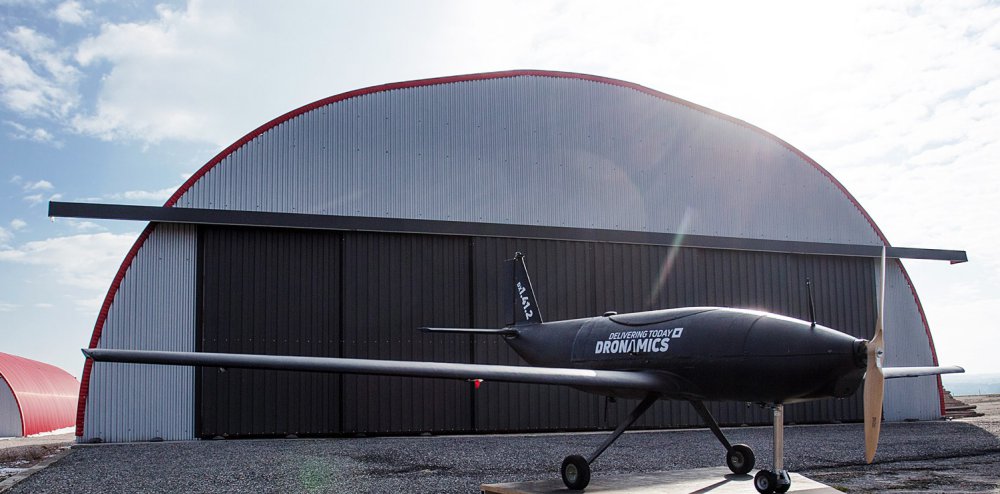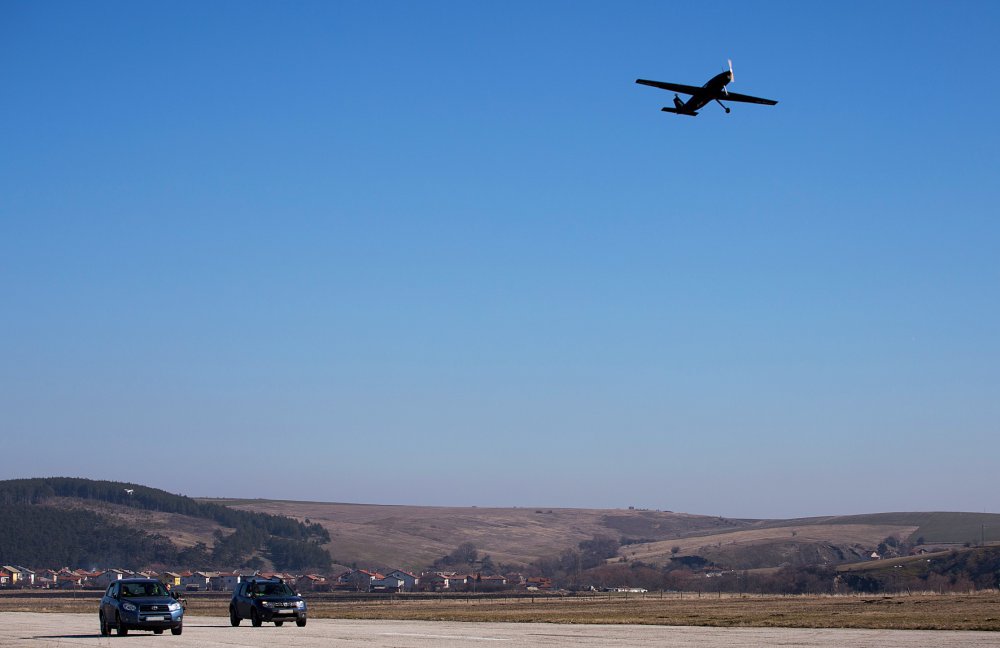Svilen and Konstantin Rangelov are the CEO and chief technology officer, respectively, of Dronamics. They’ve spent the past four years developing an aircraft that can haul nearly 800 pounds of cargo up to 1,550 miles, a far cry from the 10 or 15 miles, or even just a few blocks, that most drone delivery services are targeting.
“Most small delivery drones are an attempt to solve the last-mile problem,” Svilen Rangelov says. Dronamics is looking at the leg of the journey that comes before that. “They are the bike messenger, we are the cross-country truck.”
The problem with the current air transport system, Svilen says, is that it relies on moving a few, very big, and very expensive airplanes between major airports. When combined with cost of getting goods from the nearest airport that can handle an airliner to their final destination, the costs pile up. If you’ve got the money; the time and distance requirements; and the bulk to justify sending your stuff by air, it works fine. Otherwise, not so much. “This is why domestic cargo flights are a rarity in almost all countries in the world,” Svilen says.
The Rangelovs’ solution is a mission-tailored cargo craft called Black Swan. The fixed-wing aircraft, which uses a gasoline engine and a single nose-mounted propeller, can be monitored via satellite, fly into and out of small unpaved air strips, and could operate at a cost at least 50 percent lower than conventional, human-piloted cargo aircraft. A quarter-scale prototype with a wingspan of 13 feet—the final version will be the size of a conventional small airplane, thus far more substantial than the average sneaker-delivering quadcopter—flew in trials at military and civilian airports in Bulgaria over several months last year, with the engineers validating the aerodynamics, autopilot system, and satellite communications technology.
The fixed-wing airplane is designed for the kind of lower density cargo typical of ecommerce deliveries, as opposed to heavy, tightly packaged pallets typically crammed into cargo planes. So for predominantly individually packaged and wrapped products like smartphones, food, medicine, and, sure, sneakers,
“We focused on getting a payload that could match the most common type of ground vehicle in the world—the small cargo van,” Konstantin says. “This meant we can create an aircraft the size of a bush plane, and we could make it land at even very short runways, significantly expanding the number of towns that we can connect.”
The system is also designed to be affordable, in terms of both the production of the aircraft and their operation. Otherwise it wouldn’t be able to compete against conventional ground-based systems, even with the speed and convenience advantage. To do this, Dronamics’ engineers streamlined the craft’s aerodynamics in ways they couldn’t if they had to accommodate a cockpit for human pilots—which greatly affect structural design and balance, among other factors—and they used composite materials produced more affordably than those designed for larger aircraft. They are developing the autonomous flight system in-house, with an emphasis on off-the-shelf components.
They also designed the aircraft around the kind of cargo compartment they’d need for the types of shipments it aims to carry, which will include a variety of packages and sizes rather than uniform stacks of single products prepared for bulk shipment. For this reason, Konstantin says, they weren’t able to simply convert a military drone to this kind of civilian application. Those are designed for denser cargo, like large pallets of food and medicine, and thus are less efficient in their design and operation than vehicles optimized for this mission.
One key distinction from the many other autonomous drone delivery systems now in development, many of which use multi-rotor vertical-lift strategies instead of longer-range fixed-wing approaches, is the team’s decision to avoid battery-electric propulsion. At least for now, the Black Swan uses a Rotax engine, a piston engine common in aviation around the world. “This means that wherever we land, people will know how to service it,” Konstantin says. Because it runs on gasoline, you don’t have to worry about finding jet fuel in remote areas. Plus, batteries are heavy, and come with limited range.
Dronamics expects each of the final aircraft to cost less than $100,000—far less than any conventional cargo aircraft, which typically start above $500,000. The brothers, who will be discussing their aircraft at the Farnborough International Airshow in the UK later this month, plan to aim their service at emerging markets in Asia, Africa, and Latin America. There, the combination of rising cargo demand that has come with increased ecommerce, and more relaxed regulations governing new aircraft systems, could provide an opening in the logistics market. Svilen says they expect to initiate customer trials with the full-scale prototype by the end of 2019. If the Black Swan takes off as planned, it will mark the first airplane designed in Bulgaria in 70 years. And if it can deliver the goods, it’s unlikely to be the last.
Source: Wired


